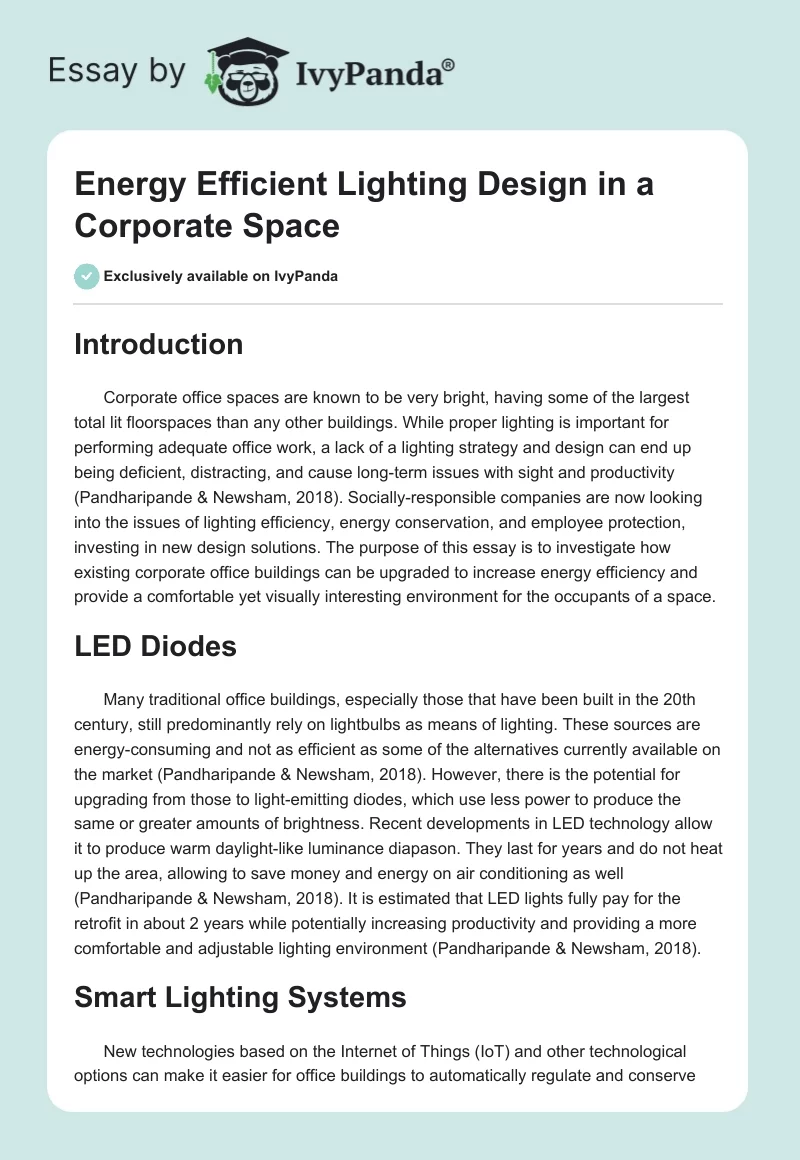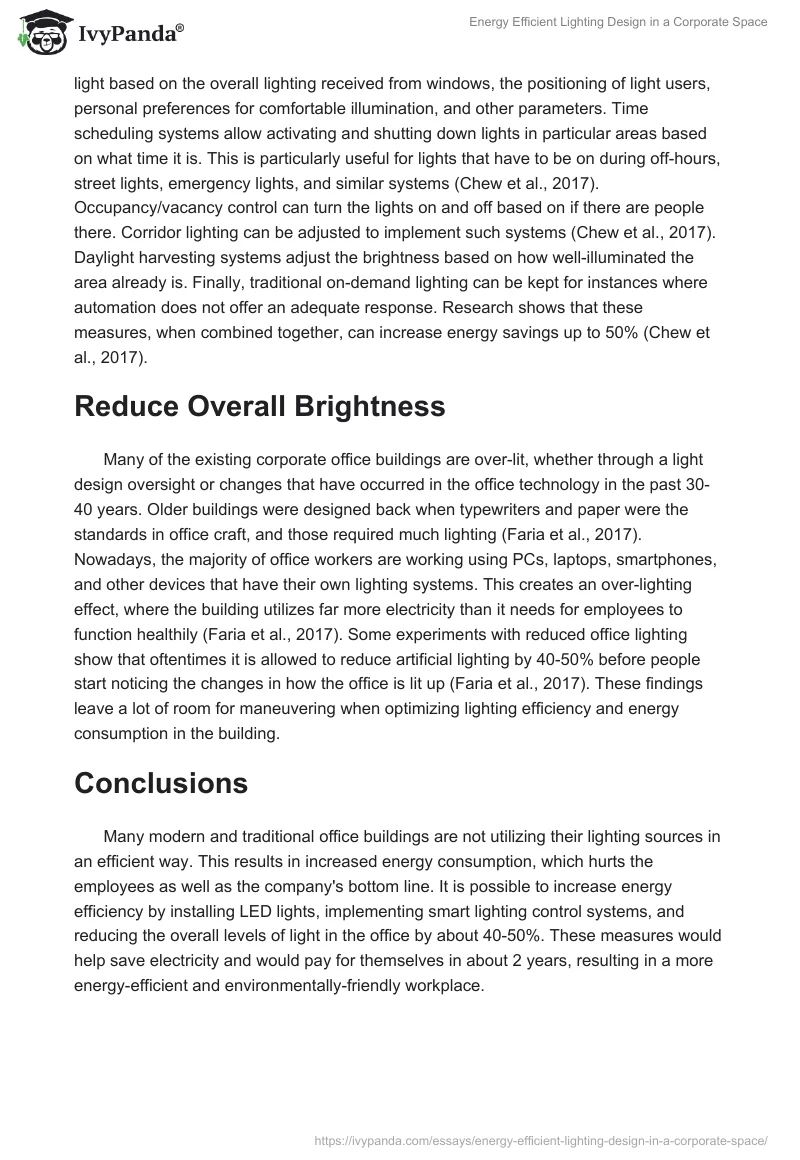Introduction
Corporate office spaces are known to be very bright, having some of the largest total lit floorspaces than any other buildings. While proper lighting is important for performing adequate office work, a lack of a lighting strategy and design can end up being deficient, distracting, and cause long-term issues with sight and productivity (Pandharipande & Newsham, 2018). Socially-responsible companies are now looking into the issues of lighting efficiency, energy conservation, and employee protection, investing in new design solutions. The purpose of this essay is to investigate how existing corporate office buildings can be upgraded to increase energy efficiency and provide a comfortable yet visually interesting environment for the occupants of a space.
LED Diodes
Many traditional office buildings, especially those that have been built in the 20th century, still predominantly rely on lightbulbs as means of lighting. These sources are energy-consuming and not as efficient as some of the alternatives currently available on the market (Pandharipande & Newsham, 2018). However, there is the potential for upgrading from those to light-emitting diodes, which use less power to produce the same or greater amounts of brightness. Recent developments in LED technology allow it to produce warm daylight-like luminance diapason. They last for years and do not heat up the area, allowing to save money and energy on air conditioning as well (Pandharipande & Newsham, 2018). It is estimated that LED lights fully pay for the retrofit in about 2 years while potentially increasing productivity and providing a more comfortable and adjustable lighting environment (Pandharipande & Newsham, 2018).
Smart Lighting Systems
New technologies based on the Internet of Things (IoT) and other technological options can make it easier for office buildings to automatically regulate and conserve light based on the overall lighting received from windows, the positioning of light users, personal preferences for comfortable illumination, and other parameters. Time scheduling systems allow activating and shutting down lights in particular areas based on what time it is. This is particularly useful for lights that have to be on during off-hours, street lights, emergency lights, and similar systems (Chew et al., 2017). Occupancy/vacancy control can turn the lights on and off based on if there are people there. Corridor lighting can be adjusted to implement such systems (Chew et al., 2017). Daylight harvesting systems adjust the brightness based on how well-illuminated the area already is. Finally, traditional on-demand lighting can be kept for instances where automation does not offer an adequate response. Research shows that these measures, when combined together, can increase energy savings up to 50% (Chew et al., 2017).
Reduce Overall Brightness
Many of the existing corporate office buildings are over-lit, whether through a light design oversight or changes that have occurred in the office technology in the past 30-40 years. Older buildings were designed back when typewriters and paper were the standards in office craft, and those required much lighting (Faria et al., 2017). Nowadays, the majority of office workers are working using PCs, laptops, smartphones, and other devices that have their own lighting systems. This creates an over-lighting effect, where the building utilizes far more electricity than it needs for employees to function healthily (Faria et al., 2017). Some experiments with reduced office lighting show that oftentimes it is allowed to reduce artificial lighting by 40-50% before people start noticing the changes in how the office is lit up (Faria et al., 2017). These findings leave a lot of room for maneuvering when optimizing lighting efficiency and energy consumption in the building.
Conclusions
Many modern and traditional office buildings are not utilizing their lighting sources in an efficient way. This results in increased energy consumption, which hurts the employees as well as the company’s bottom line. It is possible to increase energy efficiency by installing LED lights, implementing smart lighting control systems, and reducing the overall levels of light in the office by about 40-50%. These measures would help save electricity and would pay for themselves in about 2 years, resulting in a more energy-efficient and environmentally-friendly workplace.
References
Chew, I., Karunatilaka, D., Tan, C. P., & Kalavally, V. (2017). Smart lighting: The way forward? Reviewing the past to shape the future. Energy and Buildings, 149, 180-191.
Faria, J. R. G. D., Inskava, A. Y., & Planitzer, S. T. (2017). Lighting preferences in individual offices. Ambiente Construído, 17(1), 39-53.
Pandharipande, A., & Newsham, G. R. (2018). Lighting controls: Evolution and revolution. Lighting Research & Technology, 50(1), 115-128.


